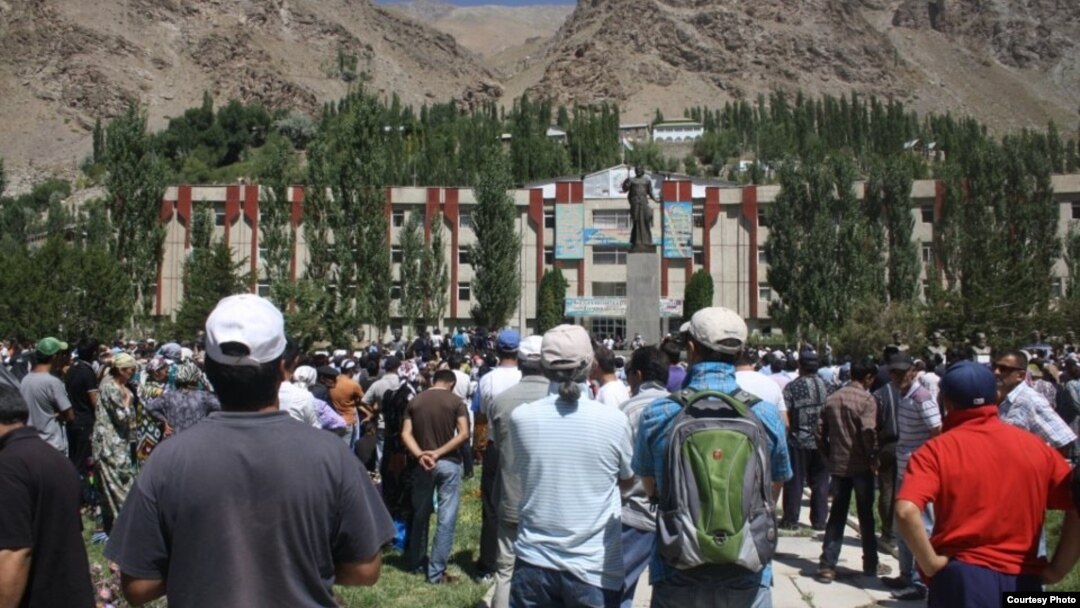For a week in late July, Tajikistan's Gorno-Badakhshan Autonomous Province was in crisis. On July 24, two days after a top security official, General Abdullo Nazarov, was killed in Badakhshan, an estimated 3,000 government troops were deployed to the region.
A week of fighting ensued that claimed an estimated 70 lives on both sides. Fighters eventually agreed to lay down their arms on July 28 after negotiations with government forces and representatives of the Aga Khan, the spiritual leader of the Ismaili sect of Islam.
The situation seemed calm until the night of August 22, when Imomnazar Imomnazarov, a former opposition commander from the Tajik Civil War, was killed in an attack on his home in Khorugh, the administrative center of the region. Imomnazrov had been wanted by the authorities in connection with the Nazarov killing. Protesters flocked to the adminstrative building in the city center demanding security, pelting the building with rocks, and even attempting (unsuccesfully) to storm the building.
Two days later, again after negotiations involving local activists and representatives of the Aga Khan, government forces announced they would leave the Gorno-Badakhshan region altogether.
For an in-depth look at the Aga Khan and how his organization, the AKDN, functions in Tajikistan, we spoke with Faisal Devji of Oxford University. Read his piece on the AKDN at "Current Intelligence."
WATCH: Faisal Devji on the Aga Khan and civil society in Tajikistan
http://www.youtube.com/embed/d1qcJQt2aWM
A week of fighting ensued that claimed an estimated 70 lives on both sides. Fighters eventually agreed to lay down their arms on July 28 after negotiations with government forces and representatives of the Aga Khan, the spiritual leader of the Ismaili sect of Islam.
The situation seemed calm until the night of August 22, when Imomnazar Imomnazarov, a former opposition commander from the Tajik Civil War, was killed in an attack on his home in Khorugh, the administrative center of the region. Imomnazrov had been wanted by the authorities in connection with the Nazarov killing. Protesters flocked to the adminstrative building in the city center demanding security, pelting the building with rocks, and even attempting (unsuccesfully) to storm the building.
Two days later, again after negotiations involving local activists and representatives of the Aga Khan, government forces announced they would leave the Gorno-Badakhshan region altogether.
For an in-depth look at the Aga Khan and how his organization, the AKDN, functions in Tajikistan, we spoke with Faisal Devji of Oxford University. Read his piece on the AKDN at "Current Intelligence."
WATCH: Faisal Devji on the Aga Khan and civil society in Tajikistan
http://www.youtube.com/embed/d1qcJQt2aWM


